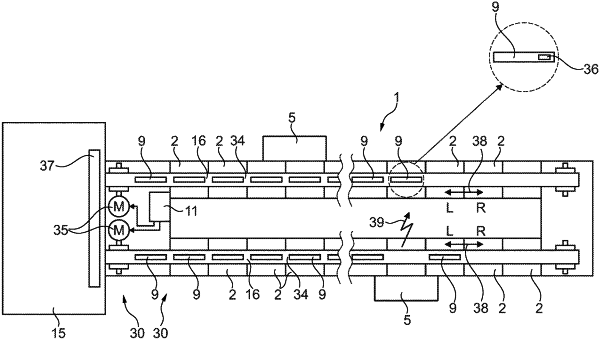| CPC B65H 67/068 (2013.01) [B65H 67/0405 (2013.01); B65H 67/063 (2013.01); B65H 67/064 (2013.01); B65H 2701/31 (2013.01)] | 12 Claims |

|
1. A textile machine producing cross-wound packages, the textile machine comprising:
a plurality of identical workstations, which are arranged in the area of the longitudinal sides of the textile machine and each of which has a winding device; and
a tube supply device, which has a central tube magazine and has at least one tube conveyor belt installed in the area of the longitudinal sides of the machine, wherein a cross-wound package can be removed, if necessary, from the winding device of the relevant workstation on the textile machine producing cross-wound packages and can be transferred to a cross-wound package transport device, and an empty tube provided on the at least one tube conveyor belt of the tube supply device can be inserted by a tube gripper into the winding device of the relevant workstation, the tube supply device being designed in such a way that the at least one tube conveyor belt can be used as a tube accumulator for empty tubes during the operation of the textile machine producing cross-wound packages,
characterised in that
a drive is connected to the at least one tube conveyor belt, which drive enables reversible operation of the tube conveyor belt, and
the empty tube is blocked at an end of the tube conveyor belt whereas the tube conveyor belt is first driven further in a corresponding direction.
|